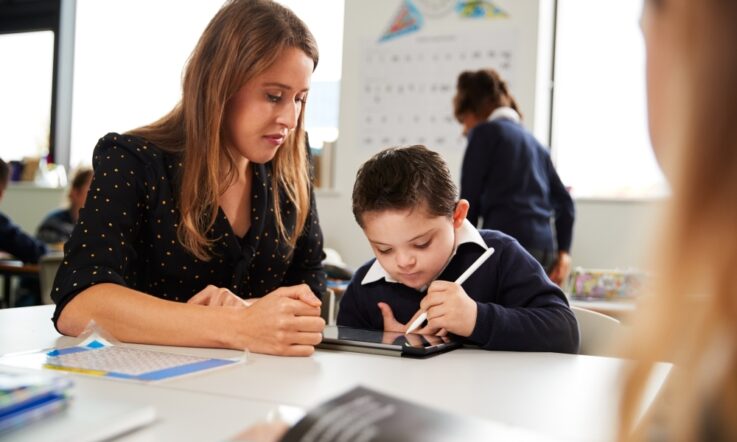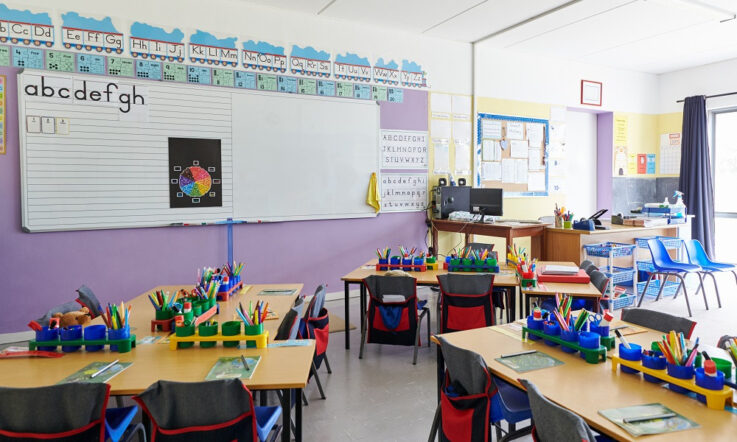To support students with additional needs in the classroom, it is important to consider how, as a teacher, you can create an inclusive space for all students to thrive. This is a whole-school effort which involves implementing knowledge and expertise from your school’s Additional Needs team (or equivalent), working to Individual Education Plans, and structuring your classroom and lesson so that it is accessible for all students.
Sue Pickett is Additional Needs Coordinator at Eltham High School. The school is situated in the green wedge of the north-western region in Victoria, and hosts a large cohort of 1450 students from Years 7-12 with 115 full-time staff equivalents. The school holds core values of the pursuit of excellence, individuality and creativity at the centre of its beliefs, and fosters a culture of inclusivity and respect.
Having worked in both special educational settings and mainstream schools for 40 years, and as Coordinator of Eltham High School’s Program for Students with a Disability for 12 years, Pickett is responsible for directing the work of a large team of Education Support staff to support students’ and their teachers’ engagement in their school program. The school now has 39 funded students on the program, with six new funded students since last year.
‘The inclusive educational model recognises the shared right of all students with or without a disability to be accepted, guided and connected,’ Pickett tells Teacher, explaining that it’s important for all teachers to have skills to support all students, including those with additional needs in the classroom.
‘Sound teaching practice brings a skill set to the “mixed ability classroom”,’ she explains. Pickett adds that throughout their career all teachers will experience a mix of students in the classroom, who have:
- Different learning styles;
- A learning difficulty which, for example, may affect their confidence, organisational skills, ability to start a task, copy from the board, plan for deadlines, use their school planner, speak in front of the class, complete set classroom or homework tasks from the textbook;
- A disability which is not deemed moderate to severe enough to attract funding;
- The ability to manage well in all learning environments;
- Funding to support them due to them being impacted by their disability to a moderate or severe level.
As a teacher, having a set of strategies to help you support students with additional needs in the classroom can go a long way to building an inclusive teaching practice for all. Pickett suggests five tips to get you started.
- Prepare and communicate: ‘Prepare for the student in your class with a disability by reading and working to their Individual Education Plan (also called an Individual Learning Plan or Individualised Education Program in the United States). Always check in with the Additional Needs Coordinator with any queries or support to provide a modified program where stipulated on this plan.’
- Display key lesson information clearly: ‘A visual timer is a powerful tool in the classroom to support those students who can’t measure time.’ Ideal use of a whiteboard should include:
- The day and date;
- The teacher’s name;
- The learning intention;
- The lesson topic;
- A visual list of activities for the lesson (including a start and end time for each);
- A list of materials and resources that students will need for the class
- Key terminology for the lesson
- Consider your classroom layout: ‘When there is an Education Support Staff (aide) in attendance, arrange for them to sit with a group of students that includes the aided student. This greatly assists the student with a disability, by helping them to blend in whilst also showing them they are not the only student who can benefit from some extra help. Alternatively, make sure the student and aide are not isolated in the classroom (unless this is their preferred position). Build your communication methods with the aide – a great support and resource in your work to support students.’
- Unpack the task: ‘Demonstrate, briefly explain, break down the task, reduce expected output (in the case of the student with a modified program) and provide visual aids. Showing a sample of what the successful finished product looks like is useful to unpack it from completion to how to start it. For example, a paragraph, an essay, an explanatory diagram, or a 3D object.’
- Support students with executive functioning: ‘Executive functioning is key to what we ask our students to do. Provide graphic organisers and mind maps for all students, which are great revision tools when preparing to demonstrate their understanding. In my experience, this is a great way for students to organise their thoughts, share their knowledge and for you to check their level of understanding. When brainstorming is done as a whole class activity, the collective knowledge can assist those who do not have all the information. Provide a word bank.’
Summing up the need to create an inclusive space and make learning accessible for all, Pickett explains: ‘Human rights are the cornerstone of strong, healthy communities where everyone can participate and be included, They are basic entitlements that belong to every one of us, regardless of our background, where we live, what we look like, what we think or what we believe. Inclusion is a right.’
Stay tuned: Teacher will soon be sharing a series of video activities with Sue Pickett on supporting students with additional needs in the classroom.
Further reading
Pickett, S. (2013) Right to learn: Disability inclusion at your school (1st Edition). TLN Press.
In this article, Sue Pickett discusses five tips to help teachers create an inclusive classroom for all students. Which of these strategies do you use in your classroom? Share these tips with colleagues and discuss how you can implement these strategies in your school.
As a teacher, take a moment to check in with your school’s Additional Needs team (or equivalent) to discuss how to best support your students. Ask for support to plan and provide a modified program if this is included on a student’s Individual Education Plan.



